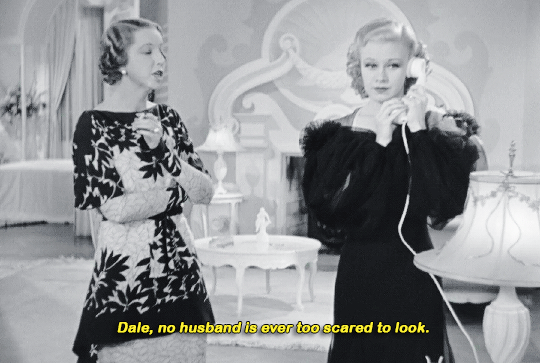Don't wanna be here? Send us removal request.
Photo

Covert operations - Operation in Rivne, Nikolai Ivanovich Kuznetsov alias “Grachov” one of the “Asssasins” of the NKVD.
One of the main tasks of the “Liquidators” was to eliminate the Reichskommissar for Ukraine, Erich Koch. To this end, an operational agent of the NKVD, N. I. Kuznetsov, was parachuted to join them on August 26, 1942. A little over two months later, Kuznetsov made his first visit to Rivne, the Ukrainian capital under the guise of Lieutenant Paul Siebert. To perfect his already remarkable mastery of German, Kuznetsov had spent several weeks posing as a German prisoner of war in NKVD camp 27 located in the Moscow suburbs of Krasnogorsk.
Two attempts against Koch were aborted due to the high level of his personal security. However, he was not the only objective, nor the only purpose of Kuznetsov’s work. During every visit he made to Rivne disguised as Siebert, Kuznetsov was also gathering information. During the spring of 1943, Kuznetsov confirmed that the Germans planned to attack in Kursk and that Hitler’s command post, codenamed “Werewolf,” for the Eastern Front was in Vinnitsa.
On Moscow’s orders, Kuznetsov was instructed to execute Koch’s lieutenant, Paul Dargel. Dargel lived in Schloss Strasse in Rivne, a heavily guarded residential area reserved for German officials. Poles and Ukrainians were not allowed in this area for security reasons. A local partisan informant, working for the administration, had informed Kuznetsov of Dargel’s daily routine and it was decided to carry out the mission on September 20, 1943. When he left his office to go home at 2:30 p.m. Kuznetsov would assassinate him. Kuznetsov had been told that Dargel was always accompanied by his deputy, who carried a red leather briefcase. In addition, when he left the Reichskomissariat he was always preceded by a military policeman who would check that the road was clear. Arriving just before the appointed time in a light brown Opel captain’s car, Kuznetsov did not have to wait long. Coming out of the car, Kuznetsov saw the two men plus the briefcase and, as they turned to hear footsteps, fired three shots at each man. Their driver, NKVD operative Nikolai Strutinski, pressed the accelerator and escaped at full speed.
Two days later, local newspapers reported the incident. It was then that Kuznetsov, at the “Liquidators” base, discovered that it was not Dargel and his assistant who had been executed, but a high-ranking economist, Hans Gehl. A month later, Kuznetsov’s second attempt against Dargel, this time with anti-tank grenades, succeeded in hospitalizing him with severe leg injuries that led to the amputation of both.
Operation of execution of a military commander and his lieutenant by NKVD intelligence officer Nikolai Ivanovich Kuznetsov, alias “Grachov”. For this purpose he adopted the identity of Oberleutnant Paul Wilhem Siebert (prisoner of the Soviets), officer of the Wehrmacht Transport Corps, holder of two Iron Crosses. For months the false officer lived with the German occupiers without being discovered, murdering dozens of German military chiefs and political officials. He approached the victim, even in broad daylight and in public places, confirmed his identity, announced that he was condemned to death and shot him at point-blank range with his standard pistol. His victims also included judges and collaborators. In total, Kuznetsov is credited with more than 20 assassinations of military and high-ranking officials.
However, he missed what could have been his most important victim: Alfred Rosenberg, minister for the Occupied Eastern Territories and one of the main ideologues of Nazism, who visited Rivne in the summer of 1943. Another important person who also escaped the execution of the “Liquidator”, as he was also known, was the Ukrainian Gauleiter, Erich Koch, who had an office in Rivne which was the official capital of occupied Ukraine and where there was also the military headquarters and the Gestapo headquarters for the whole Ukraine. It is also attributed to him that he managed to prevent the assassination of the Allied leaders during the Tehran conference, which was supposed to perpetrate a command op under Otto Skorzeny’s orders.
On March 8, 1944, he is killed, attempting to cross the front line with two comrades by members of the UPA (Ukrayinska Povstanska Armia, Ukrainian Insurgent Army), a nationalist group that fought both the Germans and the Soviets who mistook him for a German. https://ift.tt/2Oj6XwX
25 notes
·
View notes
Text
https://m.toutiaoimg.cn/a6873389387938267652/?app=news_article&is_hit_share_recommend=0
0 notes
Text
https://m.toutiaoimg.cn/a6873389387938267652/?app=news_article&is_hit_share_recommend=0
0 notes
Text
https://m.toutiaoimg.cn/a6873389387938267652/?app=news_article&is_hit_share_recommend=0
0 notes
Photo




Marilyn Monroe’s death received front-page coverage throughout the world. Gay Talese reported in The New York Times that the number of suicides in New York a week after her death hit a record high of 12 in one day. One suicide victim left a note saying, “If the most wonderful, beautiful thing in the world has nothing to live for, then neither must I.” Truman Capote, writing from Spain, recorded in a letter, “Cannot believe that Marilyn M. is dead. She was such a good-hearted girl, so pure really, so much on the side of the angels. Poor little baby.” Billy Wilder, while loudly complaining that it had been taxing to direct her in The Seven Year Itch and Some Like It Hot, recalled that it was “worth a week’s torment to get … three luminous minutes on the screen.” In Italy, Sophia Loren broke down and wept. Joshua Logan, who directed Monroe in the Bus Stop, paid her the ultimate compliment when he compared the “dumb blonde” character she created to Chaplin’s Tramp, one of the great comic inventions of the 20th century.
– Vanity Fair, October 2008
77 notes
·
View notes
Photo

Gaston La Touche (1854–1913) French DINNER AT THE CASINO, c. 1906 Oil on canvas 39 X 37 ⅝ inches
23K notes
·
View notes
Photo

No greater love….
Greater love has no one than this, that he lay down his life for his friends.
– The Holy Bible, John 15:13
ARLINGTON, VA (January 8, 2020) – A gentle carpet of snow blankets Arlington National Cemetery….
….traditional Christmas wreaths still decorating each grave….
…. bearing witness to our American heritage and the military service and sacrifice of men and women in uniform throughout our history.

________________________
>>Note: The photo at the top of this post was taken in Section 35 of Arlington National Cemetery….just south of, and adjacent to, the Tomb of the Unknown Soldier. My Dad lies a couple hundred yards away in Section 66. I’ve visited here hundreds of times over the past 15 years….
>>Photo: Elizabeth Fraser, U.S. Army
142 notes
·
View notes
Text










It is a shame to come up with a row against Russia today and to accuse Stalin as bad as Hitler, not for historical purpose but for sheer anti Russian propaganda today. Yes we all acknowledge the Molotov - Ribbentrop pack that invited Germany marching into Poland. Even in history it is not so pure and simple : why Poland took so much Reich territories and not to return them? Why the Pole marched into and acted against Czechoslovakia? ... the list is long. Germany would have marched into Poland even without a pack with a Moscow. Nevertheless, the bottom line is we need to credit the Soviets and especially Stalin of defeating Nazi Germany. That defeat is not cheap and was not designed for the pole or the British but for the pure survival of Soviet Slavs. The alternative would have been German speaking Europe with all the slaws and other sub humans as slaves and Jews totally eliminated. You want to discredit the Russians for forestalling the alternative?
1 note
·
View note
Photo

There were at least 26 known attempts to assassinate Adolf Hitler while he was in power from 1934-1944. Before 1933, there were four attempts. From 1933-1934, there were another 10 attempts. Almost all were carried out by German citizens. Source Source 2
3K notes
·
View notes
Photo






Color pictures of the reconnaissance battalion 3. SS-Panzer-Division “Totenkopf”, 1940s. In the photo — armored Sd.Kfz.222 with 20mm cannon.
92 notes
·
View notes
Photo








Photos Pz IV H from the 3rd battalion of the 24th tank regiment of the 24th tank division of the Wehrmacht during the fighting on the Nikopol bridgehead (November 1943 - February 1944). The 3rd battalion consisted of 2 companies Pz IV H (10. And 12. respectively) and 2 stug 3. (9. And 11. respectively.)
53 notes
·
View notes


























